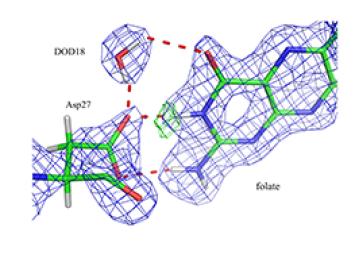Filter News
Area of Research
- Advanced Manufacturing (3)
- Biological Systems (3)
- Biology and Soft Matter (1)
- Building Technologies (2)
- Chemical and Engineering Materials (2)
- Chemistry and Physics at Interfaces (6)
- Clean Energy (41)
- Computational Chemistry (1)
- Energy Frontier Research Centers (7)
- Functional Materials for Energy (6)
- Fusion Energy (1)
- Geographic Information Science and Technology (2)
- Isotope Development and Production (1)
- Materials (39)
- Materials Synthesis from Atoms to Systems (5)
- Materials Under Extremes (6)
- Neutron Data Analysis and Visualization (2)
- Neutron Science (10)
- Nuclear Science and Technology (6)
- Quantum Condensed Matter (2)
- Reactor Technology (1)
- Supercomputing (20)
- Transportation Systems (2)
News Type
Date
Media Contacts

Water and nano-sized particles isolated from trees, plants and algae are the ingredients of a new recipe for low-cost metal oxides that are widely used in displays, smart windows, magnetic memories and coatings. This innovation by Oak Ridge National Laboratory researchers Soydan Ozcan and Yuan...

A composite foam insulation panel being developed by Oak Ridge National Laboratory and partners could reduce wall-generated heating and cooling loads in buildings by 38 to 50 percent, potentially saving homeowners $150 or more per year. The proposed 2-inch board will feature modified atmosphere insu...

With a 3-D printed twist on an automotive icon, the Department of Energy’s Oak Ridge National Laboratory is showcasing additive manufacturing research at the 2015 North American International Auto Show in Detroit.

Scientists at the US Department of Energy’s Oak Ridge National Laboratory are learning how the properties of water molecules on the surface of metal oxides can be used to better control these minerals and use them to make products such as more efficient semiconductors for organic light emitting diodes and solar cells, safer vehicle glass in fog and frost, and more environmentally friendly chemical sensors for industrial applications.

Enzymes are catalysts that speed up chemical reactions in living organisms and control many cellular biological processes by converting a molecule, or substrate, into a product used by the cell. For scientists, understanding details of how enzymes work is essential to the discovery of drugs to cure diseases and treat disorders.




